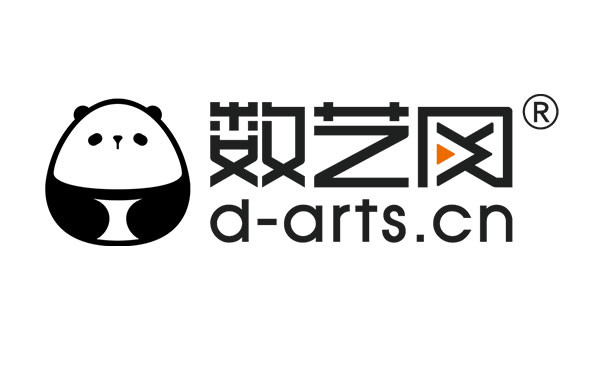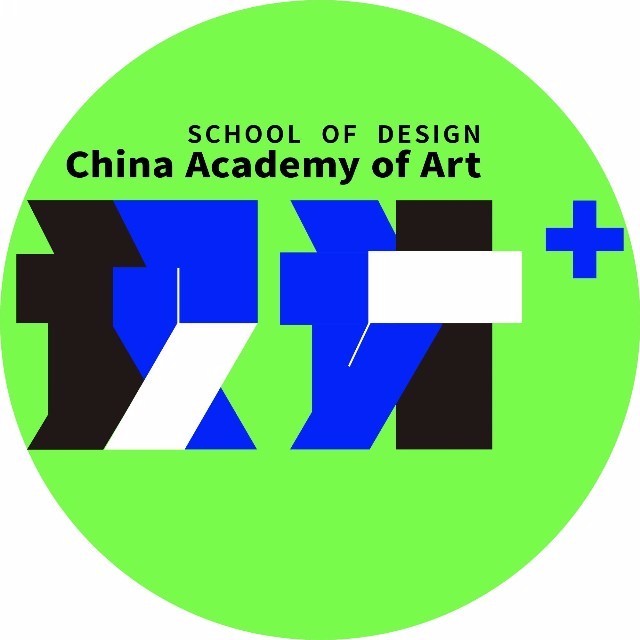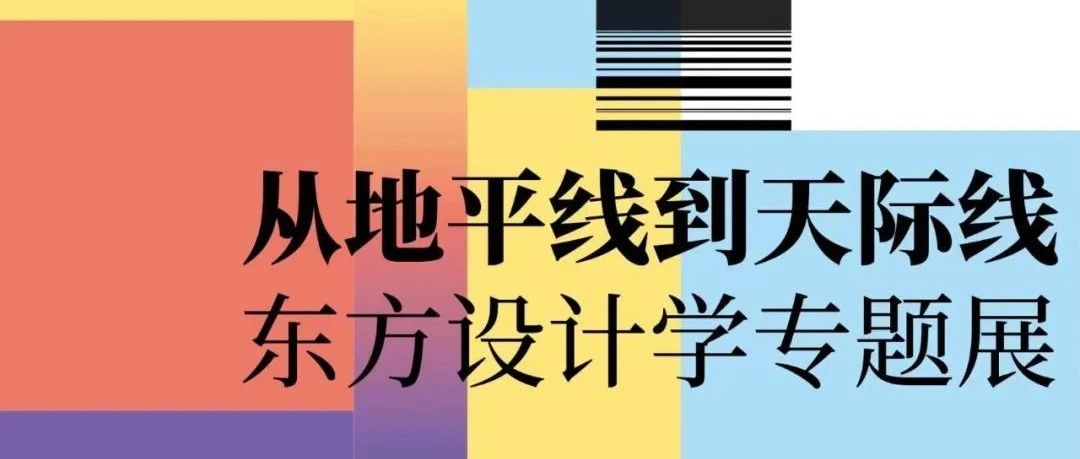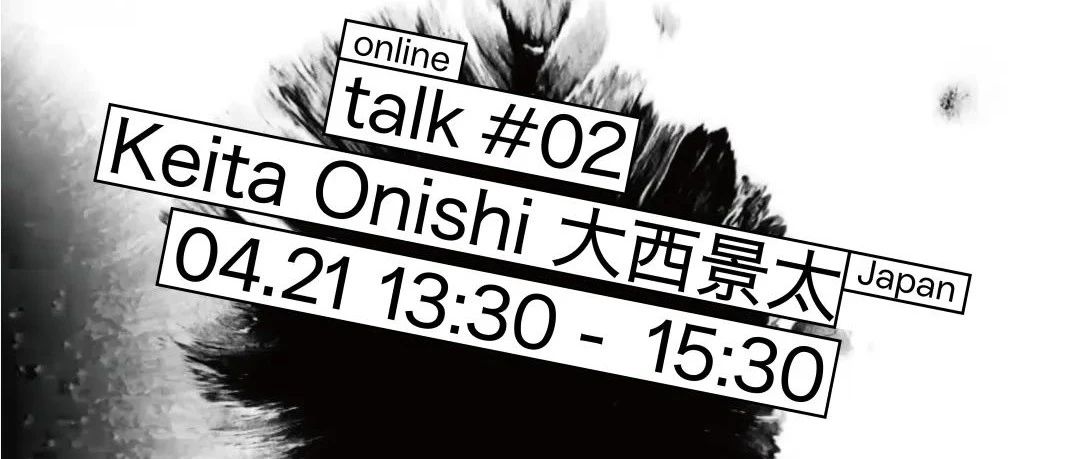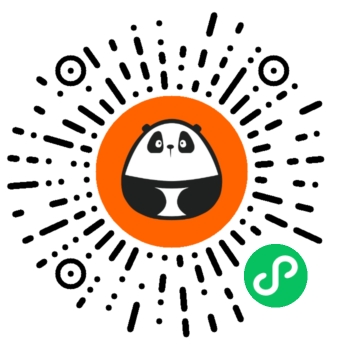- 0
- 0
- 0
分享
- 中国美术学院设计艺术周|未来的艺术与设计——“跨界•叙述性环境设计”国际论坛开幕式主旨发言
-
原创 2022-11-23


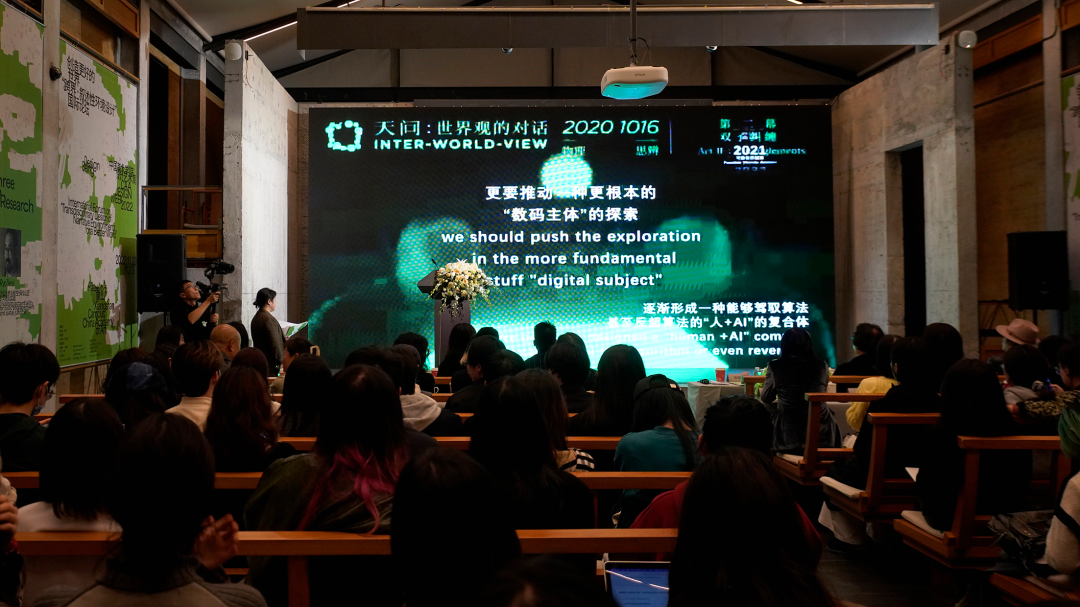
2022年11月22日,高世名院长在“跨界·叙述性环境设计”国际论坛的开幕式上做了名为“未来的艺术与设计”的主旨发言。
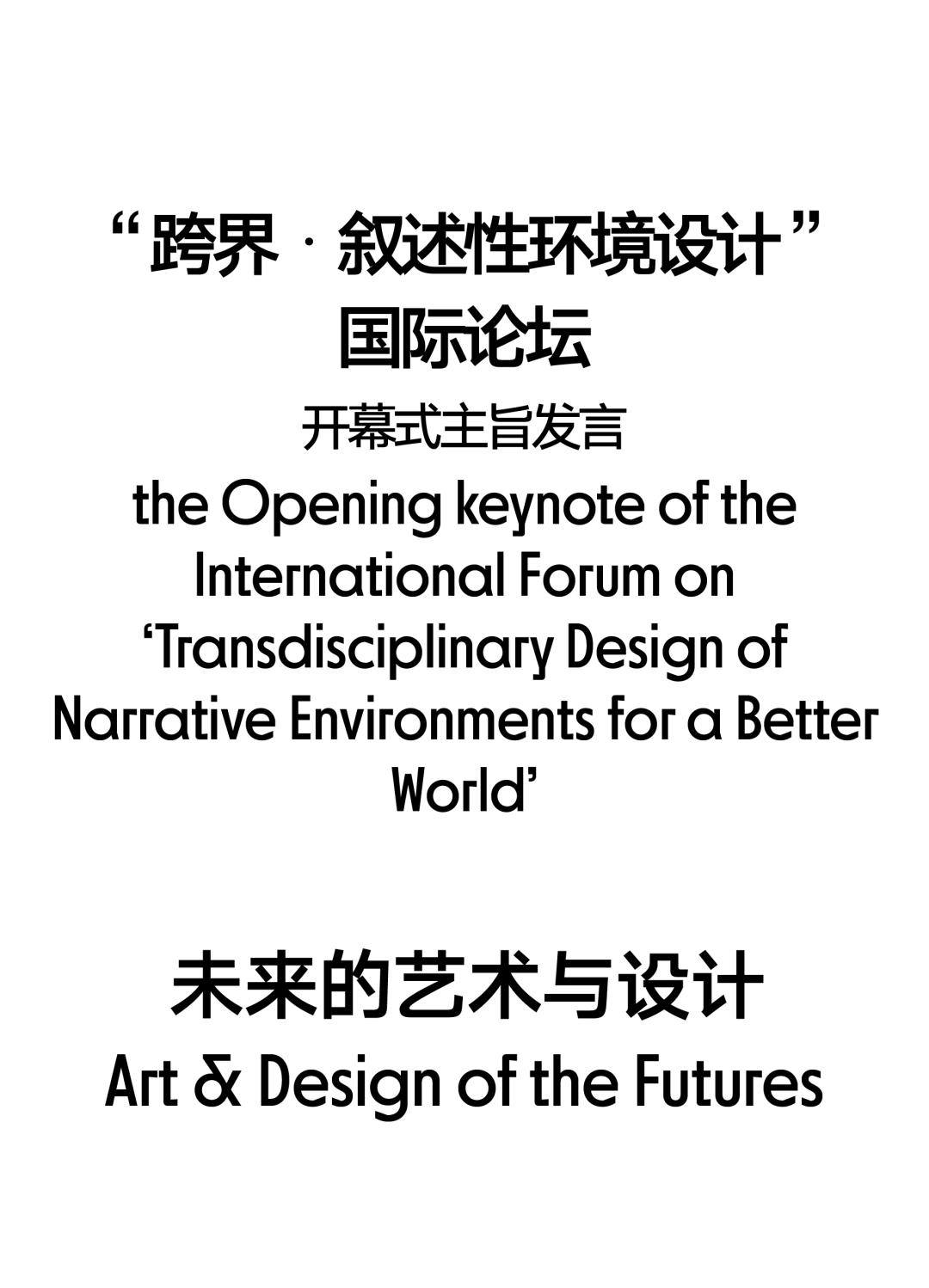
2020年毕业季,中国美院设计学院的三位本科同学联合创作了一件作品,题为《无限分之一》,包括小说、短视频以及场景设计。这件作品目前已经入围了数十家国际电影节。他们的设定是:2020这个大疫之年,三位年青人接受了生命冷冻实验,陷入长久的沉睡。五百年后他们被唤醒,那个未来世界早已实现了人机接口和脑际接口,人类上传了所有的知识和记忆,无私分享、共同拥有所有信息,形成一个“共脑”。这个全体人类的智慧集合正在汇聚一切力量突破人类的极限——形成一个超然盘旋于智慧生物圈之上的universal mind(总体心灵/世界精神)。然而,随之而来的却不是新的突破,而是创新能力的丧失和永久的停滞,因为人类社会已经没有了差异性,甚至,人类已经没有了“社会”。于是,人们只好唤醒数百年前的他们,试图从“21世纪原始文明”的差异性备份中重新激活人类社会的创造力。三位21世纪来客刚刚苏醒,就面临命运的抉择——是否上传记忆,是否融入“共脑”?
这里涉及一系列关于自我与存在、永生和虚无、人性和伦理的终极性命题,与我们这场论坛主题息息相关。“共脑”状态下的存在是否还是人类?“共脑”之中我在哪里?创造性与差异性关系为何?创造性是否只能以个体性为基础?这一系列科幻式的追问令我们反思——今天全球网络、万物互联状态下的超级智能计算不就是“共脑”的雏形吗?这件作品提醒我们,各种各样微观和宏观的增强技术正在逐渐地、不断地把我们改造为非人或者新人,人的危机正以前所未有的压迫性逼到了我们面前。

这些年,我常常跟学院的同事们探讨,影响人类未来发展的重要技术有哪些?有脑科学,有基因工程,有新能源、新材料,最后还有大数据、人工智能、物联网所形成的混合现实。我相信,这将是未来艺术和设计的主要运作场域。我甚至有些夸张地断言——如果说互联网是人类历史上的又一次大航海,混合现实就是再一次创世纪。
从长远来说,这或许不是夸大,前几年我为艺术策展专业准备了一份创意写作的考题,就是请考生们沿着下面这段开头写下去:
未来某个世纪的人们,在一次赛博旅行中,邂逅了一片恢宏的墓地,那是“互联网第一代”的赛博墓地。我们上下三代人的毕生数据和生命信息都储存在那里,那是上百亿人类的数码纪念碑。这是未来人类与“史前文明”的第一次遭遇,在他们眼中,我们现在所谓的“网一代”,其实是史前文明的最后一代……
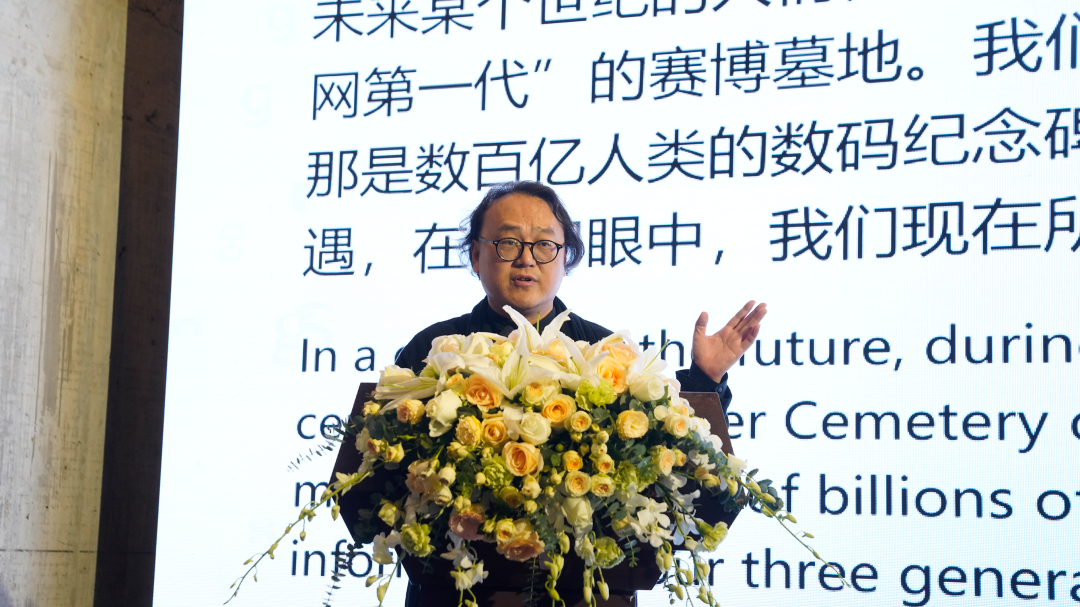
2020年9月,由于新冠疫情的原因,第77届威尼斯电影节的VR电影单元无法在本地召开,中国美院美术馆承接了威尼斯电影节VR单元的现场展示。展厅中设置了一幅巨大的未来技术发展进程表,从2000年到3500年,这是一位中国哲学家在1998年编写的。在我看来,技术的发展一定比他的预测快得多。我说服他把时间表陈列在展厅里,观者可以根据自己的理解、猜测和想象在上面修改、补充。
在我看来,VR不仅是沉浸影像,更是通向可能世界的路径。通过VR构造出的小世界,是现实的外挂,是我们这个世界的体外器官。它/它们,既外在又内在于我们的所谓现实,所以虚拟现实也是撬动我们这个坚硬的现实世界的阿基米德点。
其实,虚拟现实是艺术的一种本质面向。艺术的本质任务不但是creation,甚至朝向一种genesis。量子理论假设了无数个平行宇宙,那是无量世界,我们所谓的现实只不过是无数分之一,是实现了的可能世界。创造是一种发现、开启,是打开可能世界的通道。所有艺术家都渴望构造出自己的世界,一个充满想象力的可能世界。可以说,所有伟大的艺术作品都是超拔出现实之外的另一种现实。
很多年前,马克思主义理论家詹明信写了一本讨论科幻小说的书,叫《未来考古学》。所有的科幻作品从根本上说都是通过未来对现在所进行的一场逆向的考古,正如十九世纪欧洲人想象的未来贵族生活是在月球上骑着自行车悠闲地漫游。这种考古学透射出的现在和未来都是不开放的,“它并不能使未来具有生命力,哪怕是在想象中”,这证明了马尔库塞所谓的“乌托邦想象的枯萎”。
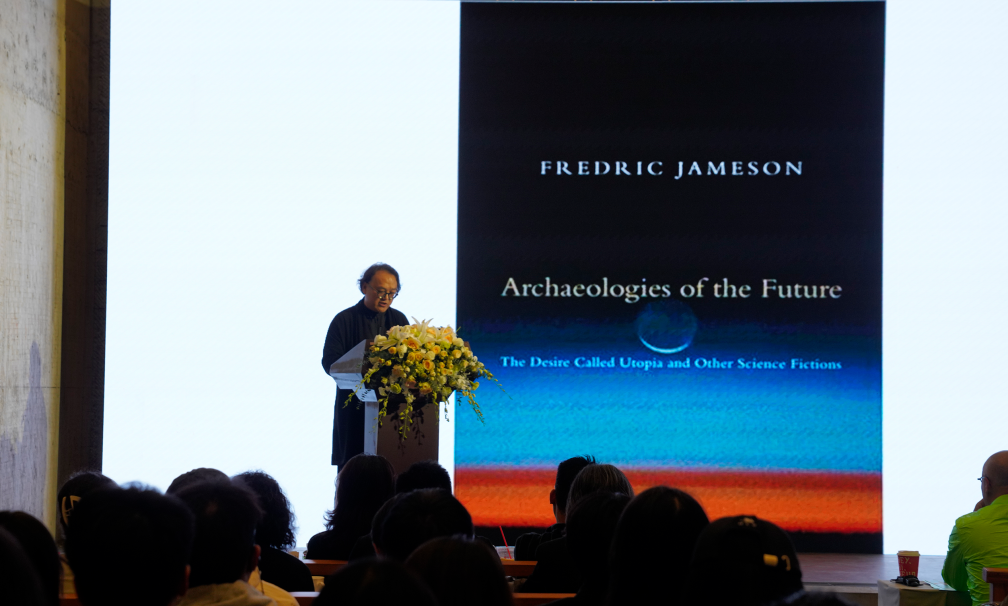
讨论未来,我们未必只是向前看,也可以向后、向源头追索。在古希腊人的经验中,哲学、教育和艺术都是作为一种“自我的技术”(自我的设计),统一于古老的神谕“epimelei heautou(关心你自己)”。根据福柯的考查,这是比德尔菲神谕“认识你自己”(gnothi seauton)更加根本的谕示。这里的“关心”(Epimelei)既是指“事奉”,又是指“训练”,同时也意味着“沉思”,指向福柯所谓的“精神性”——即“主体为了达致真理而用来塑造自己的探究、实践与体验”。
当下艺术和教育的根本责任,就是大数据、人工智能时代人的保存与人的发展。为此,我们需要构建一个多元化的思辨空间,重新思考艺术设计和教育、创造与传播、生产和消费、社会与自我之间的复杂关系,共同追问:面对“技术-信息-资本-权力”网络所建立起的总体性全球治理,我们如何重塑艺术的创造与教育?面对这种全球治理所带来的新的生命政治,作为一种“人学”的艺术/教育如何展开?
我们看到,问题已经非常严峻:最近半个世纪的诸种新技术建构起人类的各种假肢,这种越来越庞大的假肢系统正在废除我们的感受力,割裂我们的身心。未来人类的根本困境是感性贫困、身心分离。没错,这就是我们谈论未来设计所要面对的问题。在此,艺术或可有所作为。因为艺术/设计通向的,是一种上手的技艺所开启的知识,一种感同身受的知识(embodied knowledge),一种诗性制作的知识(poietic+heuretic),一种身心发动的知识。
我再强调一遍——艺术和教育的目的,是人的保存与人的发展。它们指向同一件事:一种直指人心的感受力实践,一种自我创造的精神生产,一种以人之社会性建构改变生活、改造世界的点滴工程。中国美院所倡导的艺术教育,并不是“艺术界的艺术”和“学科的教育”,而是与我们每个人的生命息息相关的更根本的东西;为了人的保存与人的发展,它必须是一种贯穿群我、打通身心的新的知行之学,一种自我创造的技术。
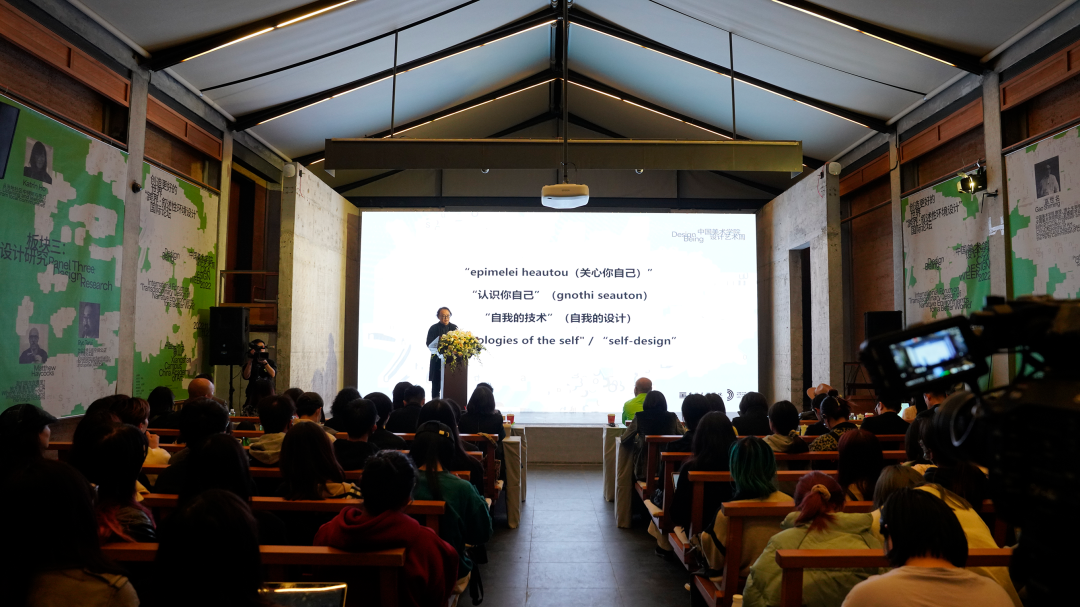
朋友们,如果以上我所说的可以成为大家的共识,我们将会看到,艺术的讯息在历史的长河中、在无数人群中传递,未来的艺术家/设计师们在”群与我”的团结中相互学习、交互展开;艺术/设计之作品在高度整合化、自动化的社会中开辟出歧见和想象,艺术之教育在“讯息-景观-资本”的多重现实中为我们的感受力拓展出一片新的田野,为我们的创造力开辟出一个新的战略空间。
无论艺术还是教育,我们所有的创造、生产,所有的努力和斗争,都是为了让人更像人。正因为如此,人类才需要创造。
创造绝不只是生产出差异的和从未有过的东西,而是可能世界的建构。莱布尼茨最先提出了“可能世界”这个概念。他说:“世界是可能事物的组合,可能事物有不同的组合,因此,有许多的可能世界”。这无疑是符合量子理论的世界观。爱因斯坦在《我的世界观》中说:“我们可以体验的最美好的事物,是充满秘密、难以理解的神秘之物,我们面对着它,仿佛回到真正艺术和科学的摇篮之中”。我们必须不断地返回艺术与科学的摇篮,在那里重新唤起我们对世界的震惊与好奇,那是一切创造力的源头。
创造是最富意义的可能性的生产。想象力只是创造力的一种必要条件而非充分条件。除了想象力,创造还涉及许多东西,好奇、冲动、感兴、关怀、欲望、价值与目的……还有最重要的,对于未知(unknown)和无名(unnamable)的爱。
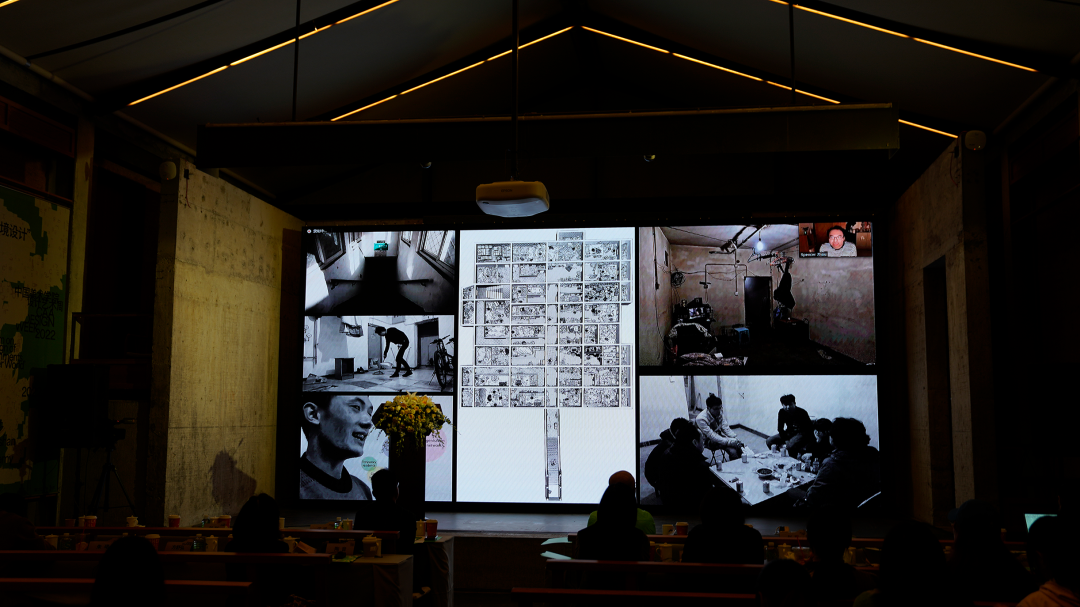
美国建筑师路易斯康说:人类并不需要第五交响乐,直到贝多芬把它创作出来,人们才发现,我们的心灵、人类的精神生活从此再不能没有它。
这就是创造,不是功利主义的目标之达成,也不是工具主义的绩效,而是发明出新的目的地、新的彼岸。朋友们,一百年前的欧洲,发生了一场政治与美学的革命,人们怀着重塑艺术自身的冲动,重新发明世界观的雄心,试图建构一个全新的世界,重新确定我们与世界的关系。那种激进的形式主义不止创造了建构性的艺术,不但创造了现代“设计”之基础,而且企图发动一场感性结构的革命,试图重组我们的欲望机制甚至社会形式。
一百年后,我们正处在又一场大变革之中,艺术、设计、科学、哲学、政治、伦理还有教育……一切都再一次等待着重新定义。我们又一次面临“重估一切价值”的关口,我们将反思着,在科学和技术的新的碰撞中重新找到艺术/设计之位置,去复兴艺术源发的创生性的感知、表达与制作,为人的保存和发展开启一段新的航程。
Two years ago, three undergraduate students from the School of Design, CAA created a joint work entitled “The Infinite Fraction”, including fiction, short video, and scene design. This work has been selected as a finalist for the Film & TV Venture Capital Investment Category at the China Science Fiction Convention 2020. Its setting is: In the early 21st century, three young people are subjected to a life freezing experiment and fall into a long sleep. 400 years later, they wake up to a future world where the inter-brain interface technology has already been achieved. All humans have uploaded all knowledges and memories to the “Co-Brain” to share all information. This collection of all human beings is gathering all the power to break through the limits of the human race to create the Universal Mind that hovers above the intelligent biosphere. The three 21st-century visitors have just awakened and are faced with a fateful decision - whether to upload their memories to integrate them into the “Co-Brain”?
There are some oldest topics of the finality regarding the self and existence, and the immortality and nothingness. Are the beings in the “Co-Brain" state still human? After all, they are a species significantly different from Homo sapiens as originally defined. However, isn't the super AI computing against the background of a global Internet of Everything (IoE) the prototype of the “Co-Brain"? A variety of micro and macro augmentation technologies are gradually and continuously transforming us into non-humans or new humans. The unprecedented oppressiveness of human crisis is pressing in on us. There is no turning back...
Over the years, I have often discussed with my colleagues in the Academy - what are the important technologies that will affect the future of humanity? They are brain science, genetic engineering, new energy, new materials, and finally the Mixed Reality formed by big data, artificial intelligence and the Internet of Things. I believe that these will be the main fields for art and design in the future. I'm even exaggerating when I say - if the Internet is another great voyage in human history, the Mixed Reality is another genesis.
This may not be an exaggeration in the long run. A few years back, I prepared a creative writing test for the art curation majors, which asked students to write a composition with the beginning paragraph as follows:
In a century in the future, during a cyber travel, people encounter a magnificent cemetery, the Cyber Cemetery of the "first generation of the Internet". It is a digital monument to tens of billions of human beings, where the lifelong data and vital information of our three generations is stored... This is the first encounter between future humans and the "prehistoric civilization”. They see what we now call the “Internet Generation" as the last generation of prehistoric civilization...
In September of 2020, the CAA Art Museums presented the VR section of the 77th Venice Film Festival, and there was a schedule of future technological development from 2000 to 3500, compiled by a Chinese philosopher in 1998. I told him that the reality must be moving much faster than he had predicted. I convinced him to post the schedule in the exhibition, where viewers could modify and add to it according to their understanding and imagination.
In my opinion, VR is not only an immersive experience, but also a path to possible worlds. The small worlds constructed through VR are the plugs-in of reality, or the extracorporeal organs of our world. They are both outside and inside our so-called reality, so virtual reality is also the Archimedean Point to move our hard real world.
In fact, virtual reality is a kind of essential orientation of art, and the essential task of art is not only creation, but even an orientation to genesis. Quantum Theory posits an infinite number of parallel universes, which are infinite worlds, and what we call reality is only one fraction of them and the possible worlds that are realized. Creation is a discovery, an opening and a gateway to possible worlds. All artists aspire to construct their own world, a possible world full of imaginations. It can be said that all great works of art are an alternative reality that is beyond reality.
Many years ago, the Marxist theorist Fredric Jameson wrote a book discussing science fiction called the Archaeologies of the Future. All science fiction is fundamentally a reverse archaeology of the present through the future, just as 19-century Europeans imagined a future in which aristocrats roamed leisurely on bicycles on the moon. This archaeological projection of the present and the future is not open. It “is not at all its capacity to keep the future alive, even in the imagination," which proves what Herbert Marcuse calls “the end of the utopia”.
In discussing the Futures, we may not only look forward, but also backward to the origin. In the experience of the ancient Greeks, philosophy, education, and art were all unified as a “technologies of the self" or “self-design” in the ancient oracle “epimelei heautou” (care of the self). According to Michel Foucault's examination, this is a more fundamental message than the Delphic oracle "gnothi seauton" (know thyself). The “care” (Epimelei) here means both "to serve" and "to train," and it also means "to contemplate", pointing to what Foucault calls "spirituality” - that is, "the investigations, practices, and experiences that the subject uses to shape himself in order to arrive at the truth".
The fundamental responsibility of art and education nowadays is the preservation and development of human beings in the era of big data and artificial intelligence. To this end, we need to construct a pluralistic speculative space of thought to rethink the complex relationship between art/design and education, creation and communication, production and consumption, and society and the self. We need to ask “How do we reshape the creation and education of art in the face of the overarching global governance established by the network of technology, information, capital and power?” and “How to carry out art education as an "hominology" in the face of the new biopolitics brought about by this global governance?”
As we see it, the problem is already very serious: the new technologies of the last half-century have constructed various prosthetic limbs for humans, and this increasingly large system of prostheses is abolishing our sensibility and fragmenting our bodies and minds. The fundamental dilemma of the future human being is the poverty of sensibility, and separation of mind and body. Yes, this is the problem we face when we talk about the design of Futures. And art may have something to do with it. Because what the art and design lead to is precisely a knowledge unlocked by hand technique, an embodied knowledge, a “poetic + heuretic” knowledge, and a knowledge initiated by the mind and body.
Let me repeat - the purpose of art and education is the preservation and development of human beings. They point to the same thing: a sensible practice that goes straight to the heart, a spiritual production of self-creation, and a bit-by-bit project to change life and transform the world through the social construction of human beings. The art/education advocated by the CAA is neither "art of the art world” nor "education of disciplines", but something more fundamental that is closely related to each of our lives; for the preservation and development of the human being, it must be a study of knowledge and practice that penetrates through the group and the self and connects the mind and body, and a technique of self-creation.
Friends, if what I have said above can be the consensus of all of us, we will see: the message of art is transmitted in the long history and among countless people, and the artists/designers of the future will learn and interact with each other in the union of the group and the self; the work of art/design opens up disagreement and imagination in the highly integrated and automated society; and the education of art opens up a new field for our sensibility in the multiple realities of “message, landscape and capital" and opens up a new strategic space for our creativity.
All of our creation and production, and all of our efforts and struggles, whether in art or in education, are aimed at making human beings more like human beings. It is for this reason that humans need to create.
Creation is never just the production of something different and unprecedented, but the construction of possible worlds. The early modern philosopher Gottfried Wilhelm Leibniz first proposed the concept of "possible worlds". He said, “The world is a combination of possible things, and there are different combinations of possible things; therefore, there are many possible worlds.” This is undoubtedly in line with the worldview of Quantum Theory. Albert Einstein said in The World As I See It, "The most beautiful thing we can experience is the mysterious, full of secrets and beyond our comprehension, with which we return to the cradle of true art and science". We must constantly return to the cradle of art and science, where we reawaken our amazement and curiosity about the world, i.e. the source of all creativity.
Creation is the production of the most meaningful possibilities. Imagination is a necessary but not a sufficient condition for creativity. In addition to imagination, creativity involves many things, e.g. curiosity, impulse, emotion, care, desire, value and purpose... and most importantly, the love for the unknown and the unnamable.
American architect Louis Isadore Kahn said, The world never needed Beethoven’s Fifth Symphony until he created it, and it was then that we discovered that we could no longer live without it in our hearts and minds and in our spiritual lives.
This is creation. It is not about the achievement of utilitarian goals, nor instrumentalist performance, but about the invention of new destinations and new goals. One hundred years ago, my friends, there was a political and aesthetic revolution in Europe, when the people, with the urge to reinvent art itself and the ambition to reinvent the worldview, tried to construct a new world and redefine our relationship with it. That radical formalism not only created the art of constructivism- the source of modern design, but also attempted to launch a revolution in the structure of sensibility and to reorganize the desire mechanism and even the social forms.
One hundred years later, we are in the midst of another revolution, with art, design, science, philosophy, politics, ethics, and education... Everything is to be redefined once again. We are once again at the point of "revaluation of all values”, and we will reflect on the need to locate the position of Art/Design again in the new collision of science and technology, to revive the creative perception, expression, and production from which art originates, and to open a new voyage for the preservation and development of human beings.
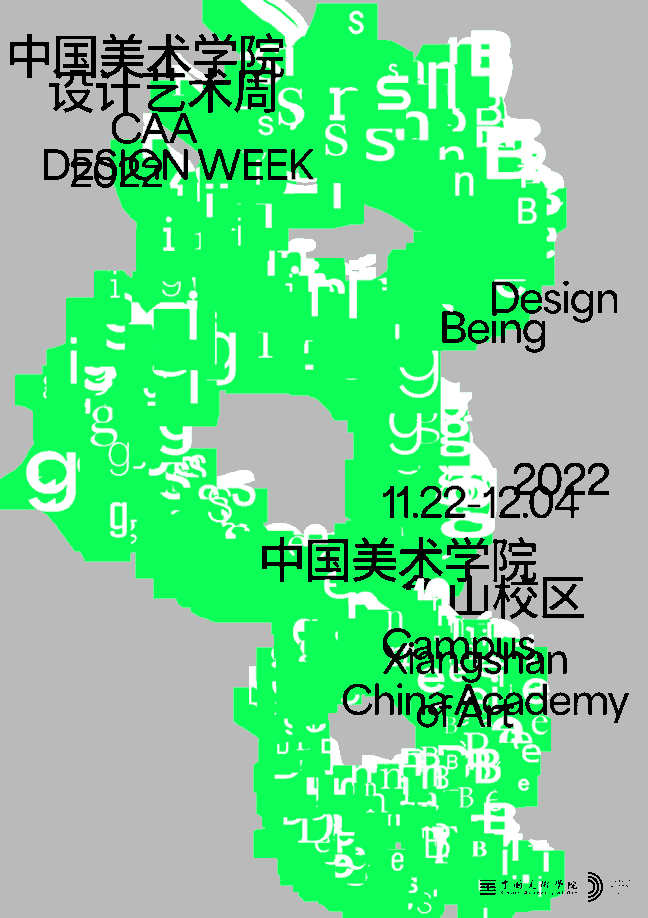
编辑 :胥雅涵
责编 :郭 星 林书米
审核 :成朝晖 王 侃
投稿邮箱 :sjnews@caa.edu.cn
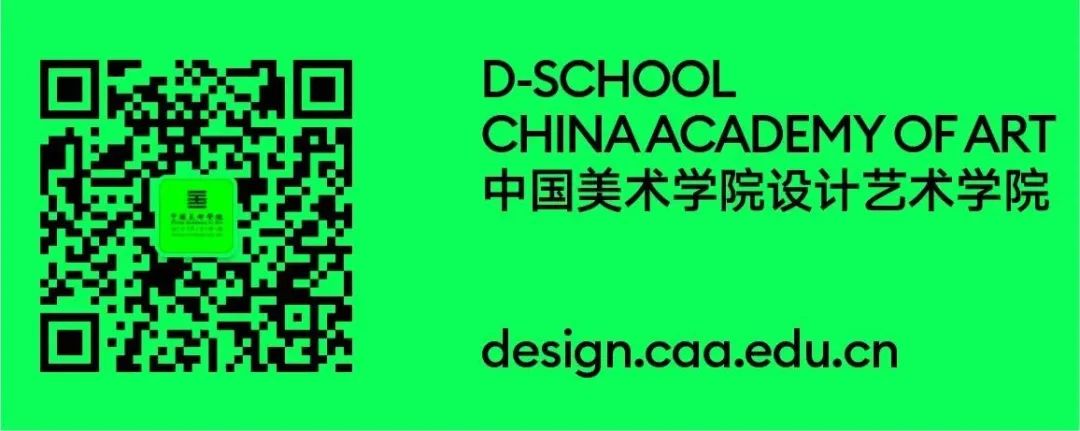
-
阅读原文
* 文章为作者独立观点,不代表数艺网立场转载须知
- 本文内容由数艺网收录采集自微信公众号设计艺术学院 ,并经数艺网进行了排版优化。转载此文章请在文章开头和结尾标注“作者”、“来源:数艺网” 并附上本页链接:https://www.d-arts.cn/article/article_info/key/MTIwMzcyNjkxNzKD331kr3aocw.html 如您不希望被数艺网所收录,感觉到侵犯到了您的权益,请及时告知数艺网,我们表示诚挚的歉意,并及时处理或删除。
